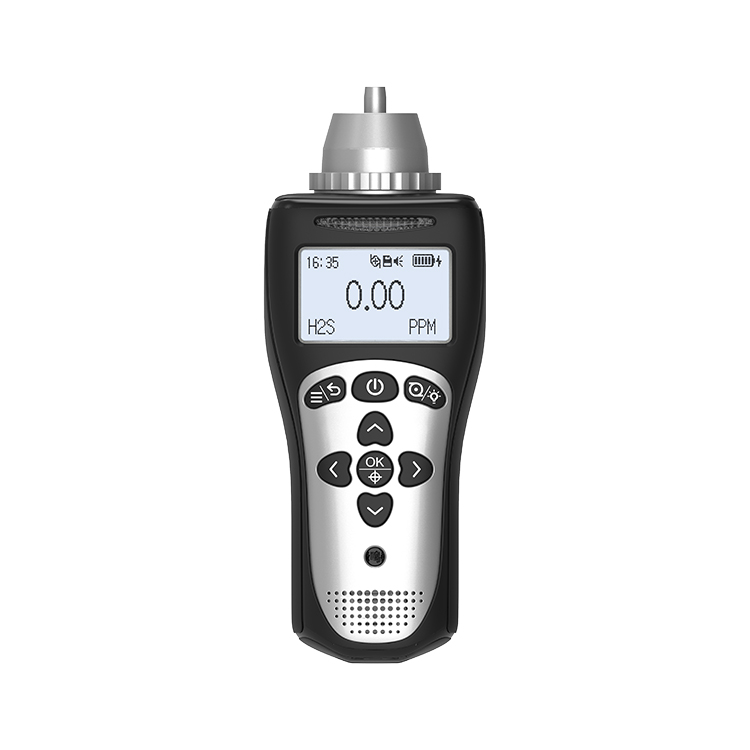- English
- Español
- Português
- русский
- Français
- 日本語
- Deutsch
- tiếng Việt
- Italiano
- Nederlands
- ภาษาไทย
- Polski
- 한국어
- Svenska
- magyar
- Malay
- বাংলা ভাষার
- Dansk
- Suomi
- हिन्दी
- Pilipino
- Türkçe
- Gaeilge
- العربية
- Indonesia
- Norsk
- تمل
- český
- ελληνικά
- український
- Javanese
- فارسی
- தமிழ்
- తెలుగు
- नेपाली
- Burmese
- български
- ລາວ
- Latine
- Қазақша
- Euskal
- Azərbaycan
- Slovenský jazyk
- Македонски
- Lietuvos
- Eesti Keel
- Română
- Slovenski
- मराठी
- Srpski језик
How should an unused portable gas detector be stored and maintained?
As a precision safety detection device, the correct storage and maintenance of an unused portable gas detector is essential to maintain its stable performance, extend its service life, and ensure accuracy when it is used again. Below, follow the editor of Zetron Technology to elaborate on how to properly store and maintain an unused portable gas detector from multiple aspects.
The following steps and suggestions should be followed for storage and maintenance:
Storage environment
1. Temperature and humidity: The instrument should be stored at room temperature or within the temperature range recommended by the manufacturer, avoiding extreme temperature environments, especially high and low temperature environments. High temperature environments may damage the internal circuits and batteries of the instrument, while low temperature environments may affect the startup and measurement accuracy of the instrument. At the same time, keep the storage environment low in humidity to avoid corrosion and damage to the internal circuits of the instrument caused by high humidity. High humidity may also affect the sensitivity and stability of the sensor.
2. Dry and ventilated: Choose a dry, cool and well-ventilated place to store the instrument, avoiding direct sunlight and humid environments.
3. Dust and dirt prevention: The storage environment should try to avoid the accumulation of dust and pollutants to avoid damage to the instrument or affect its measurement accuracy. A dust cover or packaging box can be used to protect the instrument.
4. Keep away from corrosive substances: Make sure there are no corrosive liquids or gases in the storage environment, which may damage the instrument's casing and internal components.
5. Avoid vibration and shock: The instrument should be stored away from strong vibration or shock to avoid damage to internal parts or affect the accuracy of the instrument.
Maintenance measures
1. Battery management: If the portable gas detector is powered by batteries and is not used for a long time, it is recommended to remove the batteries, because the batteries may leak or fail during long-term storage, causing damage to the instrument. For rechargeable batteries, they should be charged regularly even when not in use to maintain the activity of the battery, but be careful not to overcharge or discharge to avoid damaging the battery.
2. Sensor maintenance: The sensor is the core component of the portable gas detector and needs to be kept clean and sensitive. You can use a clean soft cloth to gently wipe the surface of the sensor, and avoid using cloth containing alcohol or other cleaning agents. If the sensor has been used for a period of time or fails, it needs to be replaced in time.
3. Calibration and inspection: Even if it is not used for a long time, the portable gas detector should be calibrated and inspected regularly to ensure its accuracy and reliability. The calibration cycle should be determined according to the instrument manual or the manufacturer's recommendations. At the same time, the appearance, battery, gas system, etc. of the detector can be checked to ensure that they are in good condition.
4. Cleaning and maintenance: The instrument should be cleaned and maintained before storage, including wiping the surface of the instrument, checking the sensor, etc. This helps to reduce the impact of dust and dirt on the instrument and extend its service life.
In summary, unused portable gas detectors should be stored in a dry, cool, ventilated, dust-proof and anti-fouling environment, and appropriate maintenance measures such as battery management, sensor maintenance, calibration and inspection, and cleaning and maintenance should be taken. These measures can effectively reduce the failure rate of the instrument, improve the efficiency of use, and provide strong guarantees for safe production and environmental protection.








